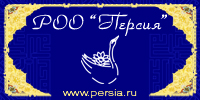
“Bhutan”, a picture story by Ivan Dementievsky, opens the last issue of this year.
Letters
Aleksandr Mescheryakov. The Book of Leisured Brush. We do not know much about the life of Yoshida Kaneyoshi, a Japanese Medieval poet, but his opus magnum, Essays in Idleness, enables us to speak about the remarkable talent of this master. Nowadays, Essays in Idleness have received due recognition around the world.
Yoshida Kaneyoshi. Essays in Idleness. Fragments of the Essays translated by Aleksandr Mescheryakov.
The Life, Being, and all Battle Deeds of Alexander, King of Macedonia. The magazine completes the publication of the fragments from the famous Alexandria in new translation from Old Russian by Tatyana Isachenko, which we started in No. 2 of this year.
The Land of Orient
Valentin Osipov. “One-sidedness is Destruction of Thought”. This judgement of Alexander Pushkin can be rightly applied to the basic principles of Literaturnaya Gazeta (Literary Newspaper), which the poet had edited in 1830. Starting from the first issue, Pushkin acquainted Russian readers not only with achievements of Western culture, but also with the Orient, which at that time was little-known and therefore mysterious.
Lyudmila Kireeva. Didactic Pictures on the Leaves of Korean Folding Screen. Since times immemorial the Koreans had been painting the folding screens. Of special interest are decorative stylised images of Chinese characters, munchado. The traditional set of eight characters with symbolic pictures was used for educating the children in the spirit of Confucian ethics.
Elena Voytishek. Japanese Culture and the Games Based on the Novel About Prince Genji. In 2008, Japan celebrated the millennium of the famous Genji-monogatari. For quite a long time, this novel was the source of ideas for various intellectual pastimes, including the games that became the subject of this article.
Andrey Strelkov. The Saint Reincarnates of the “Snowy Land”. The author tells the story of the institute of the saint reincarnates tulku, or rinpoche, who are the guardians of Tibetan Buddhist traditions. The author had made acquaintance with many of them during his research expeditions to Tibet. This enabled him not only to expose the history and modern situation of the incarnates, but also to present the scenes of their daily life.
Vladimir Lebedev. The Beautiful One Had Come. Since the finding, in 1912, of Nefertiti’s sculpture portrait, she became a symbol of women’s beauty and perfection, and in the 20th century she turned into one of mass culture fetishes. The author reviews the main events in the life of the Queen, noting various legends and sensations.
Vera Belozerova. “A Heavenly Dress Has No Stitches”. In China, the furniture, which is elevated above the floor, had apeared long before the acquaintance with Western civilization. The article, which is accompanied by illustrations, is a review of furniture tradition, the kinds of furniture, methods of finishing and decorating the household furniture.
Nail’ Akhmetshin. The Cave for Storing the Sutras. The town of Dunhuang in the Gansu Province of China has become known in the whole world due to its Caves of a Thosand Buddhas and a collection of old Buddhist manuscripts. These unique manuscripts had been partly taken to the United Kingdom, France, Russia, and the USA; in China at present there are, according to various estimates, from one-third to one-fourth of documents and artefacts. The research of these monuments, publication of catalogues and descriptions gave birth to a new research field, Dunhuang studies.
Elena Katasonova. The Masquerade of Changing Fashion. Japan is unsurpassable in the quantity and variety of youth subcultures. The author of the article proves this conclusion by reviewing the styles and trends of youth fashion, which, in the last decades, had changed one another on the wings of the wind. At first sight, motley and extravagant clothes, make-up and ornaments of young fashionmongers cannot be associated with a notorious idea of the tradition-sticking Japanese. But, probably, a key to this phenomenon is just a natural human need to demonstrate one’s inner freedom.
Vladimir Kolupaev. Vatican’s Oriental Collections. The system of research institutions of Vatican includes the Pontifical Oriental Institute, which holds most valuable book collections. The Russian researcher had been first of all attracted by the sources on the history of Russia, Russian Orthodox Church, and Oriental Christian spirituality.
Sergey Dmitriev. The Crystal Bedstead for Persian Shah. The story of making, in the early 19th century Saint Petersburg, of the crystal bedstead, which was presented to the Shah of Persia on behalf of Russian Emperor Alexander I.
Eleonora Devnarain. The Dragon of Mauritius. The history of Chinese community on the island of Mauritius is full of bright examples of hard work and enterprise of the immigrants. Almost all Sino-Mauritians are Roman Catholics who at the same time adhere to the original mixture of Buddhism, Taoism, and Confucianism. There are 14 pagodas on the island; also here there is a museum of Chinese immigration. The Chinese population celebrates their holidays with much festivity.
The “Orientnet” section reviews the Web-sites related to the aborigines of Hindustan.
Please e-mail your wishes, suggestions and comments to the following address: orientnet@rsl.ru.You can find the summaries of the previous issues online, by visiting our section of the Russian State Library Web-site: http://orient.rsl.ru/en/






